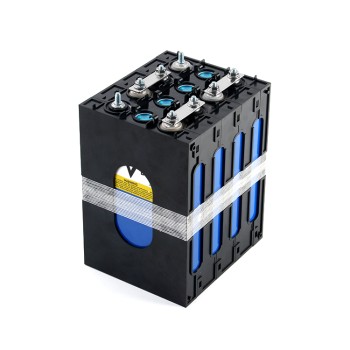
Picture this: you’re setting up a solar system or powering an RV, and you need a battery that won’t quit after a year or two. Enter the LiFePO4 battery life—a standout feature that’s turning heads among energy enthusiasts. Known for their durability, these lithium iron phosphate batteries can keep your lights on, your EV rolling, or your off-grid dreams alive for over a decade. But how long do they really last, and what makes them tick? In this guide, we’ll explore the remarkable lifespan of LiFePO4 batteries, back it up with real-world evidence, and reveal how to stretch their performance even further. Curious about reliable power that stands the test of time? Let’s dive into why LiFePO4 battery lifespan could be your next big win.
What Are LiFePO4 Batteries?
LiFePO4 batteries—short for lithium iron phosphate—are a rugged twist on lithium-ion tech. They’re designed to endure, offering thousands of charge cycles with minimal fade. Their stable chemistry shrugs off heat and wear better than typical lithium-ion packs, making them a favorite for solar storage, electric vehicles, and more.

The Secret Behind LiFePO4 Battery Life
Why does LiFePO4 battery life leave others in the dust? It’s all about cycles—how many times you can charge and drain them before they slow down. Most LiFePO4 batteries handle 4000+ cycles, retaining 80% capacity even after years of use. Charge one daily, and you’re looking at 10 to 15 years of solid performance—far outpacing the average gadget battery’s 500-cycle limit.
Their staying power comes from a rock-solid iron phosphate structure that resists breakdown under stress or heat. Plus, with a self-discharge rate of just 2% per month, they hold their juice even when parked on a shelf. For power users who dread frequent replacements, the longevity of LiFePO4 batteries is a cost-saving game-changer. Pair them with a quality BMS, and you’ve got a setup built to last. For a deeper dive into lithium-ion chemistries, see Battery University’s guide.
Real-World Examples of LiFePO4 Battery Life
Wondering if LiFePO4 battery life holds up outside the lab? In remote Australian solar homes, these batteries have powered essentials for over 12 years—hitting 3000+ cycles with barely a hiccup, according to installers. EV drivers tell a similar tale: Tesla’s early LiFePO4-equipped Model S units have clocked 300,000+ miles (around 1200 cycles) while keeping range intact, per owner reports on forums.
In colder climates, like Canada’s backcountry, RV campers rely on LiFePO4 packs for 8-10 years of winter-ready power without swapping them out. Companies like Docan Power, offering top-tier LiFePO4 cells, see customers in boats and backup systems hitting the decade mark regularly. These aren’t flukes—they’re proof of a battery engineered for the long haul.
How to Maximize LiFePO4 Battery Life
To push your LiFePO4 battery life to the max, try these tips:
- Install a BMS: It balances cells and prevents overcharging—key to longevity. Learn more in this Docan Power guide.
- Store Wisely: Keep it between 50-70°F (10-21°C). Heat speeds up wear; cold slows it slightly.
- Charge Strategically: Aim for 20-80% cycles. Full charges work but save them for occasional use.
- Avoid Deep Drains: Stay above 20% to ease cell stress.
With these habits, you could see your LiFePO4 surpass 5000 cycles—think 15+ years of service.

LiFePO4 vs. Other Batteries: A Life Span Showdown
How does LiFePO4 battery life stack up? Here’s the rundown:
| Battery Type | Cycle Life | Lifespan (Years) | Notes |
|---|---|---|---|
| LiFePO4 | 4000-12000 | 5-15 | Tough, safe, built to last |
| Lead-Acid | 300-500 | 1-3 | Affordable but fleeting |
| Lithium-Ion (NMC) | 1000-2000 | 3-6 | Decent but heat-sensitive |
LiFePO4 dominates in durability, outlasting lead-acid by a mile and edging out NMC with better stability.
Conclusion
The LiFePO4 battery life is a powerhouse perk—4000+ cycles, real-world decades of use, and easy upkeep make it a no-brainer for reliable energy. From solar homes to EVs, it’s the battery that keeps on giving. Want to stop worrying about replacements? LiFePO4 might outlast your next big project. Questions? Reach out to Docan Power and get started.
FAQs
1. How many years can a LiFePO4 battery last?
With 4000-12000 cycles and daily use, expect 10-15 years. Proper care can push it past 20 years.
2. Does a BMS really affect LiFePO4 battery life?
Yes! A BMS balances cells and prevents damage, extending lifespan significantly.
3. Can LiFePO4 batteries last in extreme weather?
They handle cold and heat better than most, but keep them in moderate temps (50-70°F) for best results.






Leave a Comment